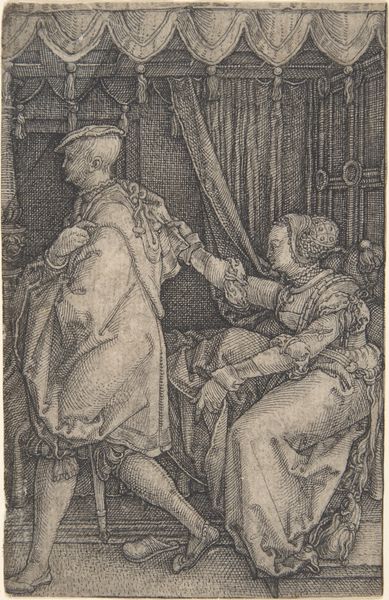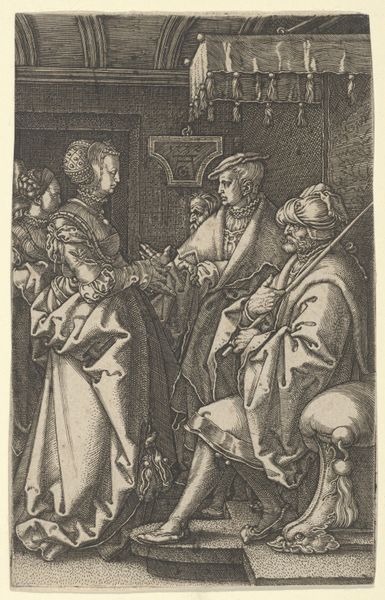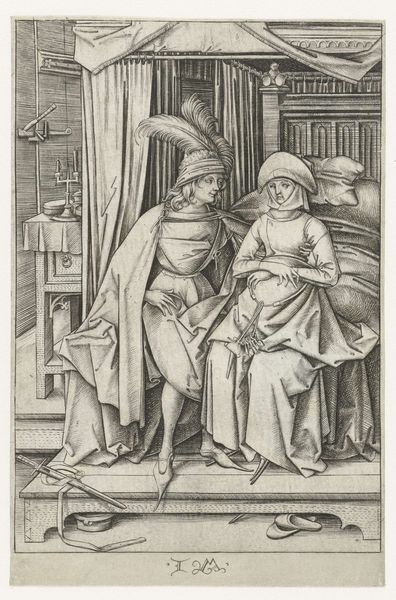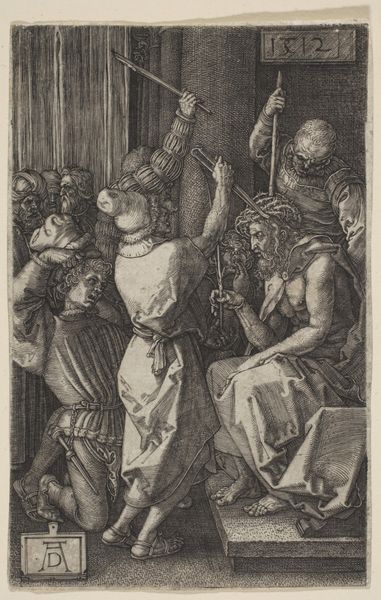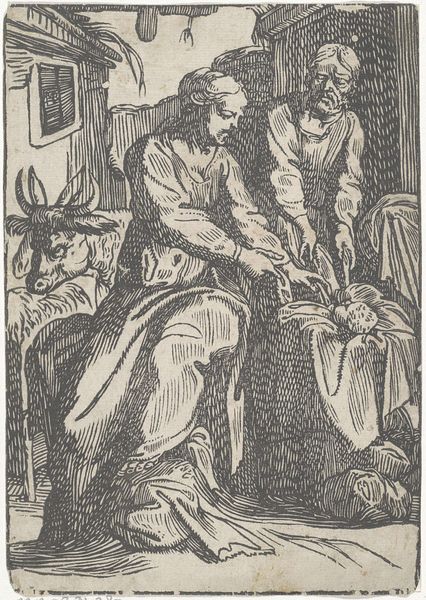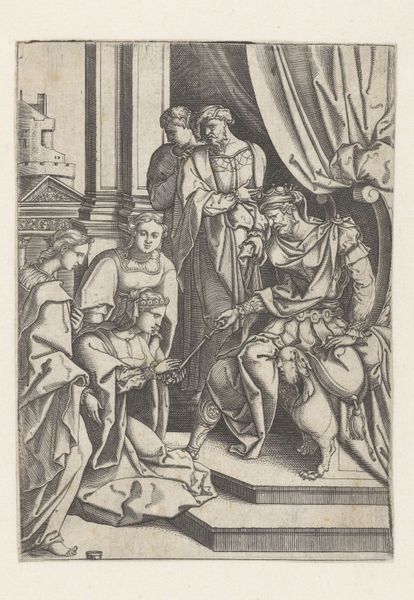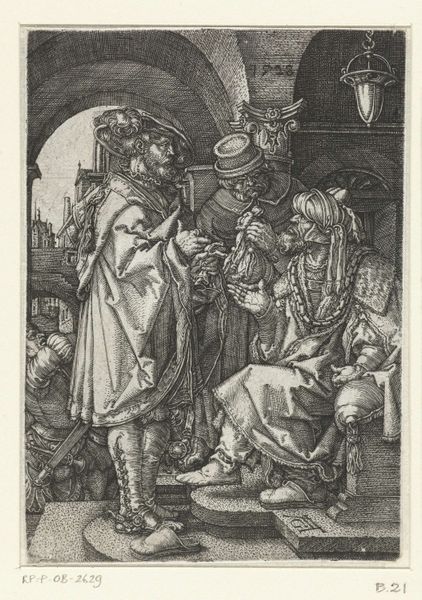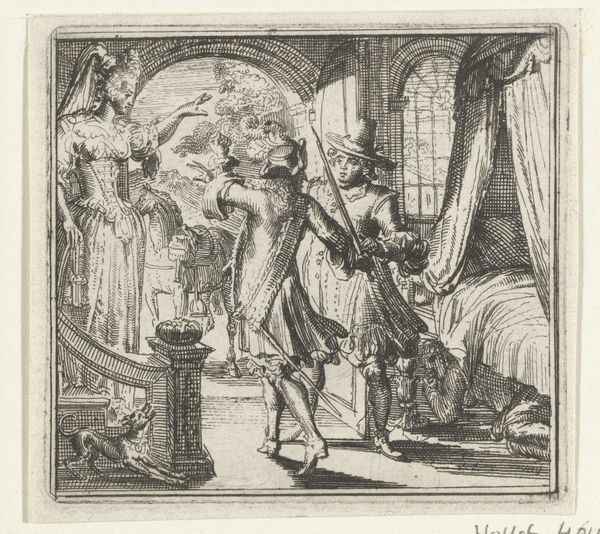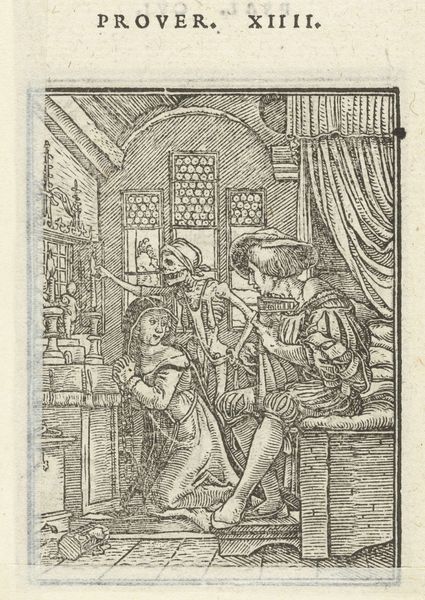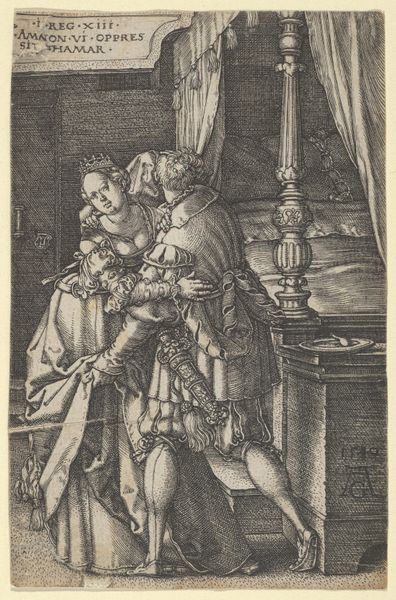
drawing, print, ink, pen, engraving
#
drawing
#
narrative-art
# print
#
pen sketch
#
pencil sketch
#
figuration
#
ink
#
pen-ink sketch
#
pen work
#
pen
#
northern-renaissance
#
engraving
Dimensions: height 117 mm, width 75 mm
Copyright: Rijks Museum: Open Domain
Editor: This engraving from 1532 by Heinrich Aldegrever, titled "Joseph and Potiphar's Wife," presents an intense domestic scene. The cross-hatching creates deep shadows, almost like a stage play unfolding. What symbolic elements do you think are most potent here? Curator: The bedchamber itself, so meticulously rendered, speaks of both intimacy and confinement. Consider the drapery—heavily textured, it’s less about comfort, perhaps, than a visual representation of wealth, power, and the psychological weight bearing down on Joseph. The abandoned slipper lying on the floor adds a sharp accent of eroticism to the unfolding encounter. The contrast in dress – Potiphar’s wife lavishly adorned and Joseph with far more humble garments is no accident. What message is Aldegrever crafting? Editor: I see the power dynamic illustrated, definitely. The woman is adorned and making a move to detain Joseph! Almost as if trapping her prey. What did an image like this signify to viewers at the time it was made? Curator: Certainly! Northern Renaissance audiences were deeply attuned to biblical narratives. Consider the visual vocabulary in play: recall the pre-Reformation religious art, and the power of images to both instruct and moralize. Now look at Joseph; what does his turning away signify? Editor: It strikes me that his turned back isn't just about rejecting her advances; it could also symbolize a rejection of worldly temptations in general. Curator: Exactly. And look closely. Do you notice his gaze avoiding contact, or are your eyes being led away? Aldegrever may have hoped to create something for a patron of high standing. Every choice matters. It reflects deeper values and anxieties. What is the meaning to someone else? Editor: The story is so prevalent; how restraint can have its rewards, and that we should value this! The iconographic layering is much more involved than I initially thought. Curator: Precisely. Art offers constant revelation, if we only engage with our own preconceptions.
Comments
No comments
Be the first to comment and join the conversation on the ultimate creative platform.
